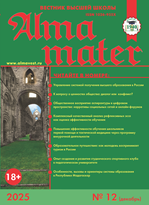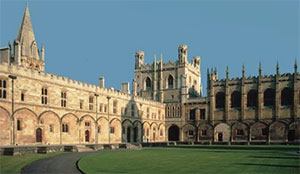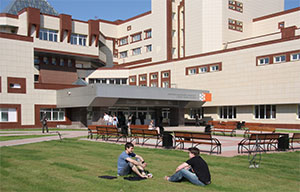UDC 37.09-043.8/.9:159.95
Vladislav G. Lizunkov, Cand. Sci. (Pedagogy), Docent, Associate Professor at Yurga Technological Institute (branch) of the National Research Tomsk Polytechnic University, Kemerovo Region, Yurga, SCOPUS AuthorID: 57193741070), WoS ResearcherID: M-8208-2016, ORCID: 0000-0002-8826-4099, AuthorID RSCI: 765960, Elibrary SPIN-код: 7418-8137, e-mail: vladeslave@rambler.ru
In the process of forming the necessary knowledge, skills and abilities of students, special attention is paid to the approaches and application of modern methods and techniques used in the process of their education. In recent years, many scientists and teachers have begun to pay special attention to the application of Neuro-Didactics principles in the process of conducting classes. Neuropedagogy is a relatively young science, which is an instrument of interaction between cognitive neurosciences and didactics. Its goal is to use the results of research on the characteristics of the human brain in relation to learning and memory for didactics and make them suitable for use in the educational process. Our study is intended to provide insight into the most important findings and thus suggest new ways to effectively teach students in continuing professional education (CVE). The paper presents a description of the brain system, in particular the frontal, parietal, occipital and temporal lobes. The limbic system of the brain is described and its most important functions related to learning are identified. Descriptions of the influence of age and gender factors on the learning process are presented. The main provisions of Neuro-Didactics are analyzed and author’s Neuro-Didactics principles are developed. The main provisions of Neuro-Didactics of European scientists and practitioners are given. An example of the implementation of neurodidactic principles in the process of preparing students in the direction of “Economics” within the discipline “Informatics” is presented.
Keywords: Neuropedagogy, Neuro-Didactics, principles, brain, engineering students, informatics, agricultural engineering.
References
1. 1. Shirshov E.V. Information, education, didactics, history, teaching methods and technologies. Dictionary of key concepts and definitions: teaching aid. Moscow: Izd. dom Akademiya Estestvoznania, 2017. 138 p.
2. Westerhoff, N. Neurodidaktik auf dem Prüfstand. Gehirn & Geist. 2008. No. 12. S. 36–43.
3. Becker, N. Hirngespinste der Pädagogik. Psychologie Heute. 2009. No. 11. S. 72–77.
4. Roth, G. Warum sind Lehren und Lernen so schwierig? Zeitschrift für Pädagogik. 2004. No. 50. S. 496–506. DOI: 10.25656/01:4823
5. Spitzer, M. Gehirnforschung für lebenslanges Lernen. In OECD (Hrsg.), Auf dem Weg zu einer neuen Lernwissenschaft. 2005. S. 1–20.
6. Brand, M., Markowitsch, H.J. Lernen und Gedächtnis aus neurowissenschaft-licher Perspektive — Konsequenzen für die Gestaltung des Schulunterrichts. In: Neurodidaktik: (Hrsg. Herrmann, U.), Grundlagen und Vorschläge für gehirngerechtes Lerhren und Lernen. 2009. S. 69–85
7. Textor, M.R. Gehirnentwicklung im Kleinkindalter - Konsequenzen für die Erziehung // Abgerufen am 17.8.2010 von Staatsinstitut für Frühpädagogik (IFP) (2010). URL : http://www.ifp.bayern.de/veroeffentlichungen/infodienst/textor-gehirnent...
8. Kraft, U. Die Macht des Weiblichen. Gehirn & Geist Dossier: Wer bin ich? 2005. S. 50-55.
9. Herrmann, U. Neurodidaktik: Grundlagen und Vorschläge für gehirngerechtes Lehren und Lernen. Weinheim, 2009. Basel: Beltz.
10. Bischof-Köhler, D. Von Natur aus anders. Stuttgart, Berlin, Köln: Kohlhammer. 2002.
11. Arnold, M. Brainbased learning and teaching. In U. Herrmann. Neurodidaktik: Grundlagen und Vorschläge für gehirngerechtes Lehren und Lernen. 2009. S. 182–195.
12. Nadeeva M.I., Nadeeva, D.B., Shakurov, R.Kh. To the question of the formation of holistic rational-imaginative worldview in students of technological university. Vestnik of Kazan Technological University. 2012. No. 3. URL: https://cyberleninka.ru/article/n/k-voprosu-o-formirovanii-tselostnogo-r... (accessed on: 16.01.2023).
13. Ogannisyan, A.V. Statement of the problem of functional asymmetry of the brain in psychological science. Intergenerational relations: modern discourse and strategic choices in psychological and pedagogical science and practice. 2020. No. 1. URL: https://cyberleninka.ru/article/n/postanovka-problemy-funktsionalnoy-asi... (accessed on: 16.01.2023).
14. Meerzon, T.I. A differentiated approach to teaching students, taking into account the functional asymmetry of the brain. Problems of modern pedagogical education. 2017. No. 55-3. P. 129–136. — EDN YPZHIP (accessed on: 16.01.2023).
15. Belyanskaya, T.E. Social and psychological characteristics of student age. Uchenye zapiski. Electronic scientific journal of Kursk State University. 2020. No. 3 (55). URL: https://cyberleninka.ru/article/n/sotsialno-psihologicheskie-harakterist... (accessed on: 16.01.2023).











.png)






